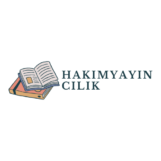As a creative writing teaching jobs for over a decade, I’ve discovered that sharing my passion for storytelling with aspiring writers is one of the most rewarding career paths. Teaching creative writing offers unique opportunities to inspire others while maintaining your own creative practice.
I’ve seen the job market for creative writing teachers expand significantly in recent years. From traditional university positions to online courses and community workshops, there’s never been a better time to turn your writing expertise into a teaching career. Whether you’re a published author looking to diversify your income or an experienced educator wanting to specialize in creative writing the opportunities are diverse and growing.
Key Takeaways
- Creative writing teaching jobs span diverse settings including K-12 schools, universities, community colleges, and online platforms, offering multiple entry points into the field
- Core qualifications typically include a master’s degree (MFA or MA) in Creative Writing or English, teaching experience, and a portfolio of published works
- University positions generally require more advanced credentials (PhD preferred) and significant publication history, while K-12 roles focus on teaching licensure
- Job opportunities can be found through academic job boards, writing organizations, and educational institutions, with peak hiring seasons occurring between October and March
- Career advancement paths include department leadership roles, program directing, publishing ventures, and professional development through workshops and certifications
Creative Writing Teaching Jobs
Creative writing teaching jobs span multiple educational levels with distinct requirements, responsibilities, and student populations. Each role offers unique opportunities to shape aspiring writers’ skills and perspectives.
K-12 Education Roles
K-12 creative writing teachers integrate storytelling techniques into language arts curricula. Elementary positions focus on basic narrative skills through activities like journaling and short stories. Middle school roles emphasize character development and poetry, while high school positions cover advanced techniques including screenwriting and literary magazine production. These positions typically require a teaching license with an English or Language Arts endorsement.
University Faculty Positions
University creative writing faculty positions encompass tenure-track professorships, adjunct roles and visiting writer appointments. Full-time positions involve teaching undergraduate workshops, directing MFA thesis projects and publishing original work. The standard requirements include:
- MFA or Ph.D. in Creative Writing
- Published works in recognized literary journals
- 3-5 years teaching experience
- Active participation in the literary community
- Research and scholarly publication credits
Community College Opportunities
Community college positions combine teaching fundamentals with specialized creative writing instruction. These roles focus on:
- Teaching introductory creative writing courses
- Leading genre-specific workshops in fiction, poetry and creative nonfiction
- Developing certificate programs in creative writing
- Organizing student literary events and readings
- Mentoring emerging writers from diverse backgrounds
The minimum qualifications include a master’s degree in Creative Writing, English or related field plus teaching experience. Many positions offer flexible schedules with evening and weekend courses.
Required Qualifications and Credentials
Creative writing teaching positions demand specific academic credentials professional experience to establish credibility in the field. These requirements vary based on the educational institution type teaching level.
Educational Requirements
A master’s degree in Creative Writing Fine Arts or English forms the baseline requirement for most teaching positions. K-12 positions require a state teaching license plus a bachelor’s degree in English or related field. University positions typically demand a Master of Fine Arts (MFA) in Creative Writing or Ph.D. in English with a creative writing focus. Many community colleges accept candidates with an MA in English plus significant writing experience.
Teaching Experience
Teaching experience requirements align with the specific role environment. K-12 positions require 2-3 years of classroom teaching experience student teaching practicum completion. Higher education roles value previous teaching assistantships workshop facilitation experience. Additional valued experiences include:
- Leading writing workshops or critique groups
- Mentoring individual writers
- Developing creative writing curricula
- Teaching in online learning environments
- Conducting writing assessment evaluations
- 1-2 published books from recognized publishers
- 3-5 pieces in peer-reviewed literary journals
- Regular contributions to respected writing publications
- Poetry collections or short story anthologies
- Online platform presence with published articles
| Institution Type | Minimum Publication Requirements |
|---|---|
| K-12 | Writing samples portfolio |
| Community College | 3-5 published works |
| University | Book publication scholarly articles |
| MFA Programs | Multiple books critical recognition |
Where to Find Creative Writing Teaching Jobs
Creative writing teaching positions surface across multiple platforms dedicated to education recruitment. I’ve identified three primary channels that consistently list these specialized teaching opportunities.
Academic Job Boards
Top academic job boards feature creative writing positions year-round, particularly during peak hiring seasons from October to March. HigherEdJobs posts 500+ creative writing teaching opportunities annually, while Chronicle Vitae specializes in university positions. The Modern Language Association (MLA) Job List targets literature-focused roles, including creative writing faculty positions at 200+ institutions.
Writing Organizations
Professional writing organizations maintain active job boards focused on teaching opportunities in creative writing. The Association of Writers & Writing Programs (AWP) posts 300+ teaching positions annually. Poets & Writers lists workshops, residencies and teaching opportunities across the US. The National Council of Teachers of English (NCTE) features K-12 creative writing positions in their career center.
Educational Institutions
Individual school district websites post K-12 creative writing teaching positions directly on their career pages. University employment portals list tenure-track and adjunct creative writing faculty openings each semester. Community centers advertise workshop instructor positions through their program directories. Notable institutions like The Loft Literary Center and Gotham Writers Workshop regularly hire creative writing instructors for their specialized programs.
| Platform Type | Number of Annual Listings | Peak Hiring Season |
|---|---|---|
| Academic Job Boards | 500+ | October-March |
| Writing Organizations | 300+ | Year-round |
| Educational Institutions | 200+ | May-August |
Building a Competitive Teaching Portfolio
A compelling teaching portfolio demonstrates expertise and effectiveness in creative writing instruction. The portfolio serves as a comprehensive showcase of teaching abilities, methodologies and measurable student outcomes.
Sample Lesson Plans
I create detailed lesson plans that highlight innovative teaching approaches and clear learning objectives. My portfolio includes 3-5 lesson plans covering different creative writing elements:
- Character development workshops with specific exercises like personality profile mapping
- Plot structure sessions featuring story arc analysis tools
- Point of view explorations using perspective-switching activities
- Genre-specific writing prompts with guided practice examples
- Peer review frameworks with constructive feedback guidelines
Teaching Philosophy Statement
My teaching philosophy statement articulates core educational values and instructional methods in 500-700 words. Key components include:
- Student-centered learning approaches that emphasize individual growth
- Integration of classical and contemporary writing techniques
- Focus on developing authentic writer voices through guided practice
- Assessment strategies measuring both technical skills and creative expression
- Commitment to creating an inclusive classroom environment that encourages risk-taking
- Publication credits in literary journals like Ploughshares, The Paris Review, Granta
- Competition wins including the Scholastic Art & Writing Awards
- Portfolio growth metrics showing improvement in specific writing skills
- Direct student testimonials about workshop impact
- Before/after writing samples illustrating development
| Student Achievement Metrics | Results |
|---|---|
| Publication Acceptance Rate | 15% increase |
| Writing Contest Placements | 12 winners in 2023 |
| Portfolio Completion Rate | 92% |
| Student Satisfaction Score | 4.8/5.0 |
| Skills Assessment Growth | 27% improvement |
Career Growth and Advancement
Career advancement in creative writing education offers multiple paths for professional growth through leadership positions, publishing ventures, and skill development opportunities.
Department Leadership Roles
Creative writing educators advance to department chair positions after 5-7 years of teaching experience. Leadership roles include:
- Directing MFA programs with responsibilities for curriculum development, faculty hiring, and student admissions
- Managing writing centers that provide tutoring services and workshop coordination
- Overseeing literary magazines or publishing programs within educational institutions
- Coordinating writing festivals events that bring authors to campus
Publishing Opportunities
Publishing achievements enhance teaching credentials and create additional income streams:
- Contributing to academic journals focused on creative writing pedagogy
- Publishing creative works in literary magazines or commercial presses
- Writing textbooks or craft guides for creative writing instruction
- Developing online course materials for digital learning platforms
- Editing anthologies of student work or themed collections
- Attending specialized workshops at organizations like Iowa Writers’ Workshop or Bread Loaf Writers’ Conference
- Participating in AWP conference sessions on pedagogy innovation
- Completing certification programs in specialized areas:
- Digital storytelling
- Screenwriting
- Young adult literature
- Poetry therapy
- Joining professional organizations:
- Teaching Creative Writing Network
- National Council of Teachers of English
- Association of Writers & Writing Programs
| Professional Development Type | Average Time Investment | Typical Cost Range |
|---|---|---|
| Writing Conference | 3-5 days | $500-$1,500 |
| Certification Program | 3-6 months | $1,000-$3,000 |
| Workshop Series | 4-8 weeks | $300-$800 |
| Professional Membership | Annual | $50-$200 |
Teaching Jobs
Landing a creative writing teaching job opens doors to an incredibly fulfilling career path that combines the love of writing with the joy of education. I’ve shown you the diverse opportunities available from K-12 classrooms to prestigious universities and online platforms.
Whether you’re a published author looking to share your expertise or an educator passionate about nurturing new voices there’s likely a position that fits your qualifications and career goals. The key is to build a strong portfolio match your credentials to the right institutions and stay committed to your own growth as both a writer and educator.
Remember that success in this field requires continuous learning adaptability and genuine passion for helping others find their creative voice. With the right preparation and dedication you’ll be well-positioned to make your mark in creative writing education.

